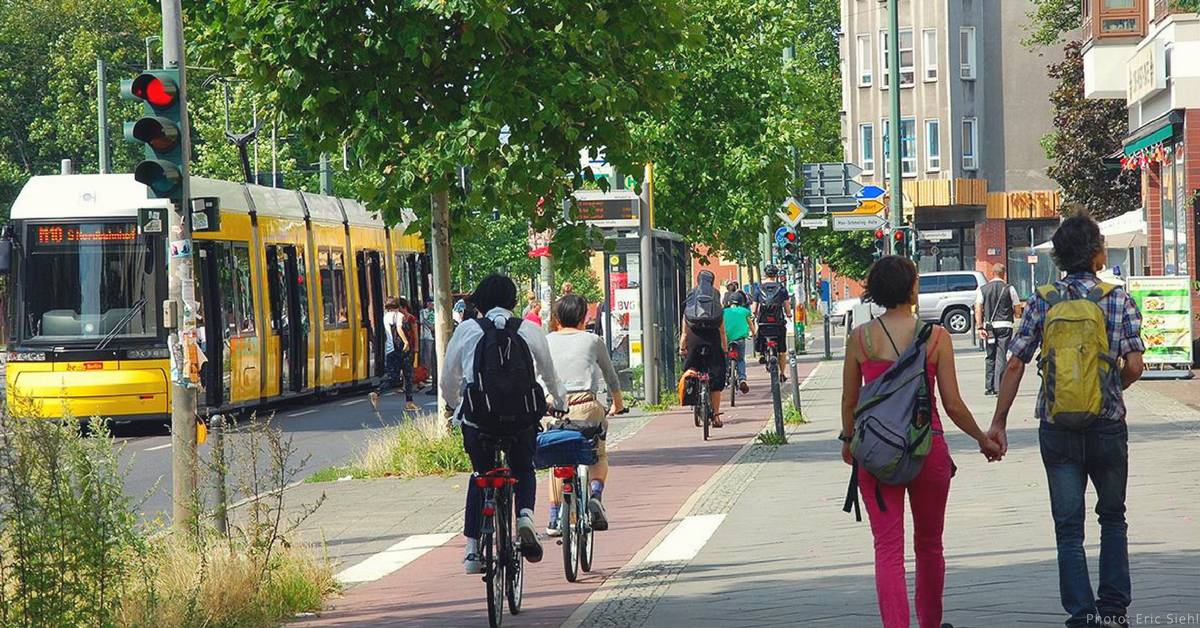CalBike 2020 Agenda
At CalBike, we have spent the weeks since the end of the 2019 legislative session plotting our direction for 2020. Soon, we’ll begin to implement the CalBike 2020 agenda by meeting with stakeholders, planning campaigns, and finding legislators to author bills to create the policies necessary to achieve our strategic plan.
We will announce our 2020 agenda in person at an event in Sacramento on December 10. Our priorities for the coming year reflect our continued focus on making California communities more safe, livable, bikeable, and equitable. With help from CalBike members and supporters, we believe 2020 will be a year of big steps toward a truly bike-friendly California.
CalBike 2020 Initiatives
CalBike will pursue campaigns in 2020 to make the streets safer, get more people on e-bikes, and change the manuals that tell planners how to make space for bikes on California streets. We’re pursuing initiatives that are proven to make our communities safer and healthier. Here’s our plan for 2020.
Complete Streets
The governor’s veto of SB 127, the Complete Streets Bill, last year included the statement that he fully supports improving facilities to increase walking, biking, and public transit use. Newsom claimed he would hold Caltrans “accountable to deliver more alternatives to driving.” CalBike will make sure he follows through on that promise. In 2020, we’re hopeful that the new leadership at Caltrans will implement the goals of SB 127, and we plan to hold the department accountable for the safety of people who walk, bike, and take transit.
E-Bike Incentives
Nearly half a billion dollars of subsidies help Californians buy electric cars. This subsidy has brought the electric and plug-in hybrid cars registered in California to about 1% of the total California electric and hybrid fleet. Meanwhile, folks who can’t afford an electric car even with the subsidy, and everybody else who would love to have an electric bike to carry their kids to school or navigate a hilly commute get zero support. Many people who would happily get around on e-bikes are forced to rely on cars instead. CalBike proposes a $50 million pilot program to help more Californians buy electric bikes for transportation.
Design Manual Reform
Despite our success in allowing local jurisdictions to use alternatives to the official state Highway Design Manual, and the department’s promotion of flexibility, the manual itself still recommends very old-fashioned, car-oriented standards. The design manual encourages bike lanes to be placed in the door zone. At the same time, it discourages narrowing car lanes to accommodate wider bike lanes. We will work with Caltrans on an overdue update to this manual. Along with necessary changes to the Manual on Uniform Traffic Control Devices (MUTCD), this effort should help local planners and engineers design streets that prioritize safety instead of fast car traffic.
Driver’s Manual Improvements
The Department of Motor Vehicles’ official manual for motor vehicle operators does a terrible job of telling motorists to expect bike riders in the traffic lane. It even tells drivers that it’s OK to park in a bike lane! It doesn’t suggest that drivers use the “Dutch Reach” to open their doors. The “Dutch Reach” is a practice of using your right hand to open your door requiring you to twist your body so that you’re more able to see a bike rider approaching. We will work with the DMV to change the manual to teach car drivers to share the road with bicyclists more safely.
Vehicle Code Improvements
CalBike updated the Vehicle Code five years ago to require motorists to give three feet of clearance when passing someone on a bicycle. However, the Vehicle Code still includes some outdated information about biking. A CalBike priority in 2020 is to amend the Vehicle Code to bring it up to date. This will include clarification that someone on a bike is not required to ride as far to the right as practicable if the traffic lane is not wide enough to share.
Change the Conversation on the Climate Crisis
In order to reduce greenhouse gas emissions from the transportation sector fast enough, we must quickly reduce the number of car miles driven by Californians. Yet, too many people still advocate for spending billions of dollars to build new infrastructure that will only result in increased car traffic. In coalition with diverse organizations, CalBike hopes to illustrate how these auto-oriented projects hurt our communities, especially low-income communities and communities of color already suffering from disinvestment. Car-centric projects hurt the planet, increasing greenhouse gas emissions when it’s imperative that we do the opposite. As a leader in the movement for safer streets and more biking, walking, and public transit, CalBike will continue to connect the dots for our decisionmakers between how humans move around and how we protect the future for all living things.
More 2020 Priorities
In addition to leading on the issues above, CalBike and our allies will work together on several other issues, not to mention additional challenges and opportunities that we can’t predict.
- Automated Speed Enforcement
- Changing how speed limits are set to make it easier to lower speed limits
- Encouraging more housing, especially affordable housing, in walkable, bikeable neighborhoods
- Improving bike parking requirements statewide
- Student transit passes
- Statewide goals to reduce vehicle miles traveled
We know that this is an ambitious agenda, but we also know that every item on it is important. Together, they add up to a better biking in California. With your help, we can get there.





